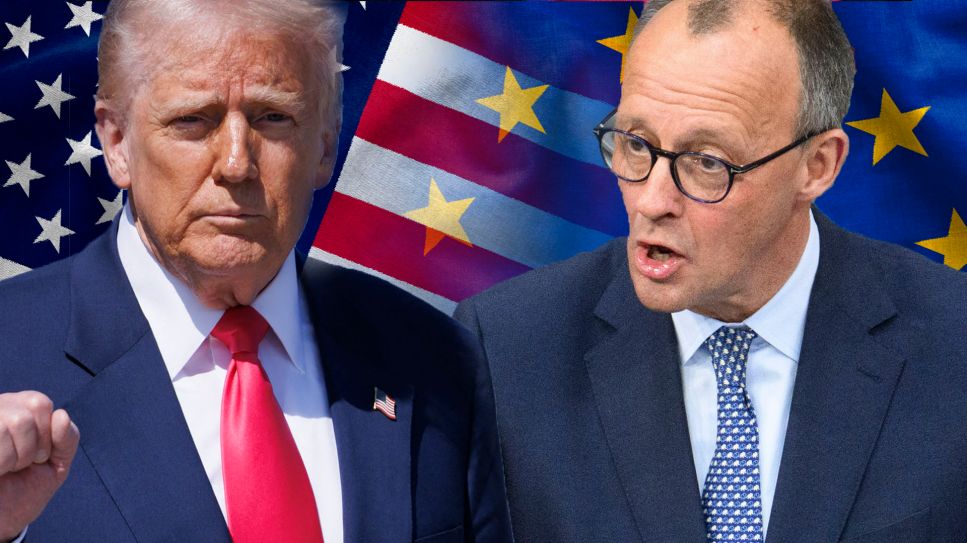Since the Donald Trump tariff policies began, the global economy has been put under a massive shock. Although the US President is looking to revive the local industries and production capabilities, the tariffs have had a strong impact on not just the American economy but on the global economy as well hampering many nations in the process.
Effect on Germany
Europe has been most directly affected by the policies, with Germany in particular facing major economic issues. The German government cut its economic growth forecast this week and now sees stagnation in 2025 instead of a 0.3% expansion as uncertainty from global trade disputes is set to limit growth and dampen investment.
Germany was the only G7 economy that failed to grow for the last two years, and the tariffs announced by U.S. President Donald Trump could put Europe’s largest economy on track for a third year without growth for the first time in history.
Germany’s export-driven economy was already struggling with weak global demand for its products, and foreign companies were chipping away at its competitiveness.
While announcing the figures, which were reported by Reuters on Tuesday, Economy Minister Robert Habeck called for the European Union and the U.S. to find a solution on trade, but also for the EU to prepare countermeasures if needed.
“Now the German economy is once again facing major challenges due to the unpredictable trade policy of the United States,” Habeck said in a written statement.
“Given the German economy’s close integration into global supply chains and our high level of foreign trade openness, the new US protectionism could have significant direct and indirect effects on our economic growth,” he said.
For 2026, the government now expects growth of 1%, down slightly from its January forecast of 1.1%, expecting some uptick under the incoming government of chancellor-in-waiting Friedrich Merz.
Exports are expected to fall by 2.2% this year, following a 1.1% decline in 2024. Next year, exports are expected to rise by 1.3%.
Earlier this month, German economic institutes cut their growth forecast for this year to 0.1% from the 0.8% expected in September, taking into consideration initial U.S. tariffs on steel, aluminum, and cars.
However, a survey on Thursday showed German business morale unexpectedly improving in April, though expectations were still slightly gloomier as companies remain uncertain about how the tariff escalation with the United States will play out.
The German government foresees inflation falling to 2% this year and then to 1.9% next year, down from 2.2% last year.
Economic weakness will take its toll on the labour market, with the unemployment rate expected to go up to 6.3% this year from 6.0% last year, before falling to 6.2% in 2026.
Trump Effect on the US and World
The US has also not remained unaffected by President Donald Trump’s tariff policies. Since Trump took office in January, his moves have led the US economy to contract, shrinking 0.3% in the first quarter of 2025, as reported by the Bureau of Economic Analysis (BEA).
The US economy grew 2.4% in the last quarter of 2024 and 2.8% overall last year. The recent shrinking is the first in 12 quarters, as the last time the US economy contracted was in the first quarter of 2022.
Analysts say that the impact of Trump’s policies is starting to become evident, as seen in macroeconomic data, triggering recession concerns. Slowing consumer spending and a sharp decline in federal spending are some of the main drivers of the contraction.
According to market experts, the contraction was expected with Trump’s win, noting that as the president started trade wars, a slowdown in global trade was anticipated.
It is also anticipated that the rise in tariffs and additional taxes on imports will make some products “impossible to import” due to rising costs, slowing down demand.
There is a decline in supply rather than demand, paving the way for the US economy to enter a period of contraction. Experts indicate that this is because other countries are also imposing retaliatory tariffs on products exported by the US. High tariffs on high-in-demand products fail to enter the country, triggering a period of contraction in the US economy.
Meanwhile, the EU and Chinese economies are also slowing down. It is expected that as the US economy’s growth slows down, the slowdown in global trade will continue to fuel inflation.
Falling oil prices is another factor playing into inflation, but there has yet to be a significant amount of movement in oil prices to contribute to inflation. the US tariffs could lead to rising consumer prices.
While the goal of the US President is to reinvigorate the production capability of the US, the tariffs will now allow American companies to attempt to compete with the global demands and cultivate their production capabilities regardless of the global economy. This is bound to create collateral damage as the US economy has long depended on the production ability of foreign nations, and its citizens are the consumers. Trump is attempting to mount a huge change in this cycle. Will these attempts give successful results? Only time will tell. For now, the US and global economy continue to take the hits, looking to recover again in the long run.
